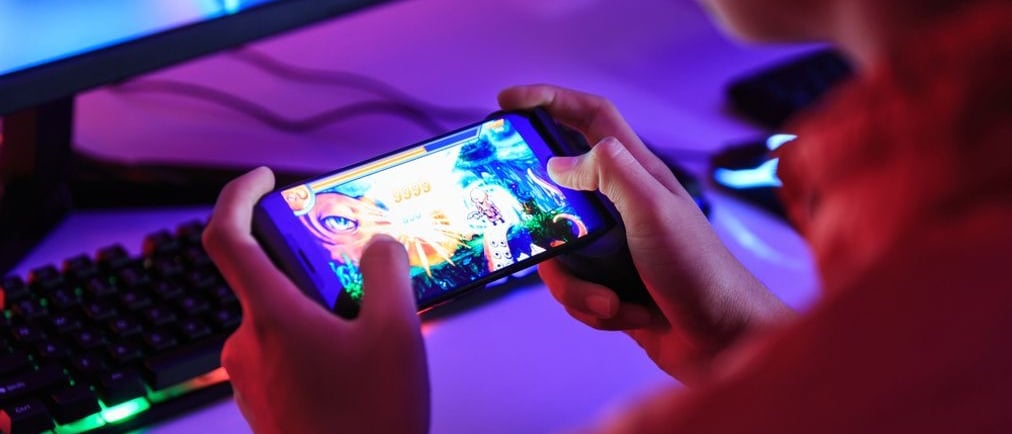Understanding the Motivations Behind Gacha Players' Spending Habits
8 min read


Introduction to Gacha Games
Gacha games represent a distinct genre within the broader landscape of mobile gaming, characterized by their unique mechanics and monetization strategies. Originating from Japan, the term "gacha" is derived from "gachapon," referring to capsule-toy vending machines that dispense random prizes. In essence, gacha games replicate this element of chance by allowing players to spend in-game currency or real money to obtain virtual items or characters, often leading to a sense of excitement and anticipation with each pull.
One of the key mechanics that sets gacha games apart from traditional gaming is their reliance on RNG (random number generation) to determine the outcome of item pulls. This system can create a thrilling experience for players, as they are often drawn to the allure of rare or powerful characters. Unlike traditional gaming models that prioritize skill or story progression, gacha games focus heavily on collecting and upgrading characters or items, fostering a different kind of player engagement.
The popularity of gacha games has surged in recent years, with revenues reaching staggering figures and numerous titles achieving significant success. For example, mobile gacha games collectively generated billions of dollars in revenue, and titles such as "Fate/Grand Order" and "Genshin Impact" have demonstrated the model's financial viability and global appeal. Their dynamic gameplay, coupled with frequent updates and events, keeps players invested over time, thereby encouraging regular participation and spending. As these games continue to dominate the mobile gaming market, understanding the mechanics behind gacha games is crucial in comprehending their monetization strategies and the motivations driving player spending habits.
The Psychology of Gaming: Why Players Engage
The allure of gacha games is not solely founded on gameplay mechanics; it is equally rooted in complex psychological factors that compel players to engage and invest financially. One of the central elements is the concept of anticipation. Gacha mechanics are designed to create excitement through the anticipation of rewards. Players often experience thrill and suspense while awaiting their turn to acquire new items or characters, which taps into the psychological phenomenon known as the "near-miss effect." This effect, highlighted in various psychological studies, posits that players are motivated to keep trying when they come close to achieving the desired outcome, thus encouraging further spending.
Another critical aspect lies in the reward systems embedded within these games. Gacha games frequently employ variable reinforcement schedules, akin to those seen in slot machines. This approach ensures that rewards are unpredictable, heightening the sense of excitement and engagement. Studies have shown that players are more likely to invest in systems where the timing of rewards is uncertain, as it stimulates the brain's pleasure centers. As a result, the expenditure of money becomes seamlessly integrated into the gaming experience, serving as a functional part of the reward pathway rather than merely a transactional activity.
Moreover, the instantaneous nature of gratification in gacha games adds an extra layer of appeal. Players are often rewarded immediately upon spending, fostering a cycle of spending and satisfaction. This instant reward can overshadow longer-term considerations, leading players to embrace the short-term joys that spending brings. Furthermore, social dynamics play a role; many gacha games leverage communal aspects by integrating competitive elements, encouraging players to invest more to keep up with peers. Understanding these psychological triggers can offer insights into the financial behaviors of gacha players, elucidating why they consistently choose to invest in these experiences.
In-Game Purchases: A Breakdown of Spending Habits
Gacha games have grown significantly in popularity, leading to a diverse array of spending habits among their players. According to recent industry reports, the average gacha player spends approximately $80 to $100 per year, with a notable segment of the audience that falls into higher spending tiers. These high-spending players, often referred to as "whales," can exceed annual expenditures of several thousand dollars, reflecting a small but influential percentage of the overall player base. Understanding the motivations behind these spending habits is crucial for developers and marketers alike.
There are several categories of in-game purchases in gacha games, primarily revolving around currency buys, character enhancements, and limited-time offers. The most common type of purchase involves acquiring in-game currency, which allows players to obtain gacha pulls—random draws that provide characters, items, or other resources. Additionally, players often spend on character upgrades or exclusive content to enhance their gaming experience, thus increasing their chances of obtaining desired outcomes from gacha mechanics. These purchases serve not just as a means to progress in the game but also as a way for players to showcase their status within the community.
Demographic analyses indicate that younger players, particularly those aged 18 to 34, are more inclined to spend on gacha games, driven largely by social influences and a desire for collection. Notably, factors such as game design mechanics, loyalty rewards, and the appeal of limited-time offers contribute significantly to these spending decisions. Players are often motivated by the thrill of chance, with many believing that increased monetary investment correlates with better chances of receiving rare items. Understanding these nuances in spending habits can empower developers to optimize their monetization strategies while enhancing player satisfaction.
Community Influence: Social Dynamics and Peer Pressure
The phenomenon of gacha games has created a unique gaming ecosystem where community dynamics significantly impact players' spending behaviors. Social interactions within gaming communities often foster an environment where peer pressure and trends can influence individual decisions related to in-game purchases. Players frequently seek validation from their peers and are motivated to enhance their gaming experience, which can lead to increased financial investment in gacha elements.
Online forums, social media platforms, and streaming services play an instrumental role in shaping these dynamics. Players frequently share their in-game achievements, discuss character valuations, and showcase their obtained items, which can amplify others' desire to invest in similar purchases. This collective interaction reinforces a social norm where spending is viewed not just as an option but as a necessity to keep pace with community standards or trends. Consequently, players may feel compelled to spend more in order to maintain their status within the group, leading to increased financial commitments in gacha games.
Furthermore, the competitive element intrinsic to many gacha games heightens the sense of urgency. Community events and leaderboards often spotlight successful spenders, thus creating a psychological incentive for other players to follow suit. This competitive spirit can be seen as a catalyst for heightened expenditure, with individuals striving to be part of discussions or achieve featured status among friends and gamers alike. The cycle continues as players encourage one another to climb the ranks, often justifying their spending habits in light of social influences. Ultimately, the interplay of community influence, peer pressure, and social dynamics significantly contributes to the spending habits of gacha players, shaping their experiences in profound ways.
FOMO and Limited-Time Offers: Understanding Urgency
The phenomenon known as "Fear of Missing Out" (FOMO) plays a crucial role in the spending behaviors of gacha game players. This psychological aspect, combined with well-structured marketing tactics, creates an environment where urgency significantly influences player decision-making. Gacha games frequently leverage limited-time offers to promote exclusive content, rare characters, or unique items, effectively instilling a sense of scarcity. When players are presented with the opportunity to acquire coveted in-game elements for a brief period, they often feel compelled to make immediate financial commitments to avoid the disappointment of missing out.
A striking example of FOMO's impact can be seen in various gacha titles that host special events. During these occurrences, developers introduce limited-time banners featuring exclusive in-game characters or items that can enhance gameplay. These promotions typically coincide with holidays, anniversaries, or game updates, which further magnifies their appeal. Statistics reveal that user spending frequently spikes during such events, underscoring the effectiveness of urgency-generated marketing strategies. For instance, during a recent crossover event in a popular gacha game, in-game purchases increased by over 150% compared to an average period, illustrating how urgency can drive financial engagement.
Moreover, these tactics are not only effective in creating urgency but also play into social dynamics. Players may share their achievements and acquisitions on social media platforms, prompting others to join in and experience the fear of missing out. This collective behavior reinforces the critical role that FOMO and limited-time offers play in gacha games. By continuously evolving these marketing strategies, developers maintain a cycle of excitement and spending, which consistently propels player engagement and financial investment. Overall, the intertwining of urgency and player psychology is paramount in understanding the motivations driving spending habits in gacha gaming.
The Ethics of Gacha Mechanics and Player Autonomy
The gacha gaming phenomenon has garnered significant attention not only for its engaging mechanics but also for the ethical concerns it raises. As players navigate these systems, there are growing discussions surrounding the implications of gacha mechanics—particularly regarding addiction, manipulation, and the balance between player engagement and potential exploitation. Industry experts, players, and gaming organizations have expressed varying perspectives on these issues, highlighting the complex nature of player autonomy within gacha environments.
One core ethical concern revolves around the addictive nature of gacha mechanics. Players are often lured into spending money with the promise of rare items or characters, which can lead to a compulsion to continue spending beyond their means. Research studies have indicated that gacha systems can trigger psychological responses similar to those seen in gambling, raising alarms about addictive behaviors particularly among younger players. Critics argue that game developers, acknowledging these potential pitfalls, have a responsibility to implement measures for player protection and promote healthier spending habits.
Another significant aspect of this discourse is the concept of informed consent. In many gacha titles, it's not always clear to players what they are opting into when they engage with these mechanics. Transparency regarding odds of obtaining sought-after items is often lacking, leading some to question whether players can genuinely make informed choices about their spending. Stakeholders argue that industry standards should prioritize clarity and player agency, ensuring that individuals fully understand the implications of their purchases.
Case studies and industry reports have started to emerge, aiming to shed light on long-term effects associated with gacha spending. These investigations often reveal a spectrum of opinions, ranging from calling for stricter regulations to advocating for self-regulatory practices in the gaming sector. By analyzing these ethical dimensions, it becomes possible to forge a more balanced conversation around gacha mechanics, player autonomy, and the responsibilities of developers. Ultimately, fostering an environment that respects players’ rights and choices is essential for the sustainable growth of the gacha gaming industry.
Conclusion: The Future of Gacha Spending
As the landscape of gacha games continues to evolve, understanding the motivations behind players' spending habits is critical for developers and researchers alike. Players are drawn to this genre due to its blend of chance, nostalgia, and community engagement. Factors such as the allure of exclusive items, the desire for competitive advantage, and the social dynamics present within gaming communities significantly influence spending behavior. These insights are paramount for organizations looking to refine their monetization strategies in an ethically sound manner while maximizing player satisfaction.
Looking towards the future, trends indicate that gacha game design may increasingly incorporate elements of transparency and fairness to mitigate criticisms surrounding predatory monetization practices. Developers may focus on the implementation of systems that reward player loyalty and foster long-term engagement without compromising the core experience. In addition, the integration of artificial intelligence and big data analytics can provide game designers with deeper insights into player preferences, allowing for personalized content delivery that could enhance player experience and, consequently, spending.
Moreover, with an expansion in mobile gaming accessibility, it is likely that newer demographics will engage with gacha games, presenting fresh opportunities for tailoring experiences to a wider audience. As gacha games strive to balance profitability with user-friendly mechanics, it will be essential for future academic analysis to delve into these evolving behaviors. Researching player habits will not only contribute to a better understanding of consumer psychology within this niche but also assist in shaping more responsible and engaging gaming environments.
In conclusion, the future of gacha spending remains a fascinating area of inquiry, with potential growth and evolution driven by technological advancements and a deeper understanding of player motivations.



